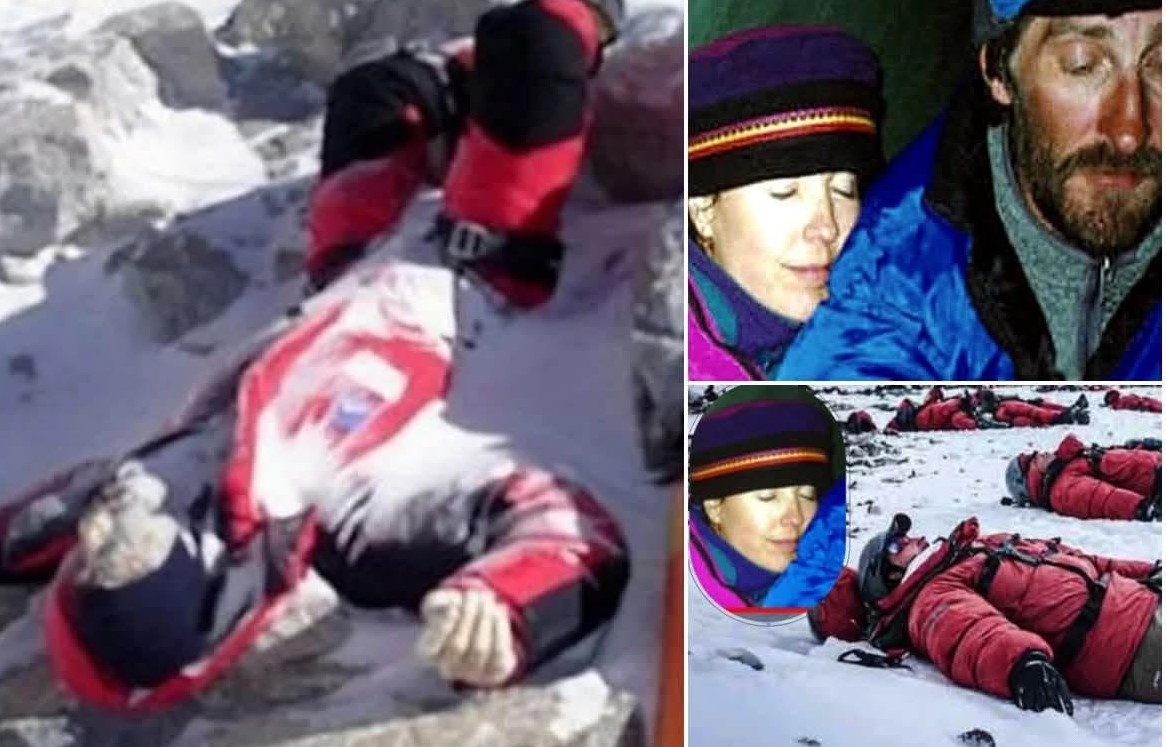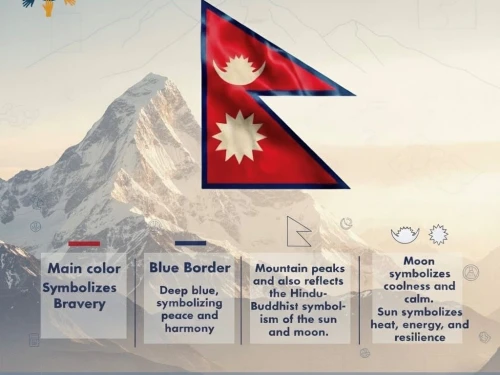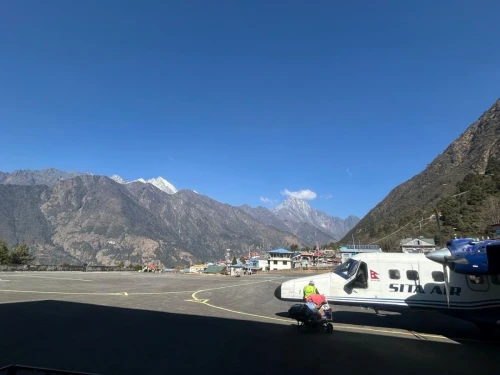Why Is Mount Everest So Deadly?
We must first understand why people die on Mount Everest before we can discuss stories about dead bodies and climbing experiences. As I've already indicated in previous paragraphs, Everest's primary lethal factor is its high elevation.
It is crucial to only travel with seasoned travel partners like Mount Glory Treks, which has ten years of experience and guarantees a hassle-free trip, because the weather in Everest is extremely harsh and unpredictable, changing in a matter of minutes.
Additionally, the icefall and avalanches could collapse, particularly in the Khumbu Icefall, which is a moving ice tower that has the potential to instantly crush climbers. Risks like frostbite and hypothermia, which are frequent in below-freezing temperatures where exposed skin freezes in a matter of minutes, come next.
Many such risks make the Mount Everest expedition so deadly, and the causes of the Mt Everest dead bodies. In addition, Climbers may be blown off ridges by the winds, which are reported to reach speeds of over 160 km/h on the world's tallest mountain.
Two other significant risks that make the Everest so deadly are physical exhaustion due to terrain challenges and crowds, causing delays in the journey.
Everest Death Zone
At elevations above 8,000 metres, the area known as the "Death Zone" of Everest is where oxygen levels are extremely low and cannot support human life for prolonged periods of time.
Hallucinations, confusion, exhaustion, hypoxia, and an elevated risk of HAPE and HACE are some physiological effects that occur in the death zone when oxygen is not supplemented. Additionally, reports indicate that a typical human can only live in the Death Zone of Everest for a few hours without additional oxygen.
Because of the extreme weather conditions, including low temperatures and low atmospheric pressure, climbing becomes hazardous. Because of this, careful expedition planning is essential because any errors or delays at the Death Zone could be extremely deadly.
The unfortunate thing is that there is no way to recover or rescue anyone in this area. Because traffic congestion in the Death Zone can result in more fatalities, it's critical to prepare ahead of time and exercise caution.
Read More: Everest Base Camp Helicopter One Day Tour
History of Deaths on Everest
Both tragedy and glory are woven throughout Mount Everest's history. Although the British conducted the first significant expedition in 1921 and mapped the mountain, the first known fatalities occurred in 1922 when an avalanche killed seven Sherpas. When George Mallory and Andrew Irvine made their daring summit push in 1924, they disappeared high on the slopes just two years later, leaving a mystery that has persisted to this day. It would be nearly three decades before Sir Edmund Hillary and Tenzing Norgay reached the summit in 1953, cementing Everest as the ultimate mountaineering prize.
More than 6,000 ascents have been successful on Everest since then, but more than 300 people have died. Due to inadequate weather forecasting, outdated equipment, and a lack of medical knowledge, the fatality rate was significantly higher on early expeditions. On the other hand, modern commercial climbing has made things safer with better equipment and logistics, which has led to a slight decrease in fatalities. However, new hazards have surfaced; many contemporary deaths are now caused by crowding, traffic jams, and delays in the death zone.
In addition to its tragedies, Everest has produced some amazing records. At the age of 80, Japanese climber Yuichiro Miura became the oldest person to reach the summit (2013), while American Jordan Romero caused a stir when he reached the summit at the age of 13 (2010). As of 2023, Lhakpa Sherpa has become the most successful woman to reach multiple summits, and Kami Rita Sherpa has set the unrivalled record of 28 ascents among Sherpas. The world is reminded that every victory carries the weight of great risk by the silent presence of hundreds of bodies on Everest, even though these accomplishments serve as monuments to human perseverance.
Why are Bodies Left on Everest?
One of the most haunting realities of Everest is that the majority of those who die never return. It is difficult to recover the bodies of those who perished during their mountain expedition, especially if it occurred in the death zone.
The question "Why are the dead bodies left on Everest?" is frequently raised by these incidents. Actually, the main reason is the sheer difficulty of recovering the body. Retrieving a body above 8000 metres is extremely risky and costly; it frequently costs tens of thousands of dollars and calls for large rescue teams with Sherpas who must also put their own lives in danger to carry the frozen, lifeless body down the steep ice walls and narrow ridges.
In such extreme altitudes and weather, people already struggle to carry themselves and walk, making carrying the dead nearly impossible. As a result, most climbers who die in the death zone remain where they fell, becoming part of the Mt Everest dead bodies.
In addition to the risks and costs, there are cultural considerations that lead to the bodies being left on Everest. Mount Everest, also known as "Sagarmatha" in Nepali and "Chomolungma" in Tibetan, is considered sacred, and the dead are believed to be left peacefully in the mountain. For many Sherpas, the mountain is a place of spirituality, and it is disrespectful to disturb the dead.
Book Now: Everest Three Passes Trek With Mount Glory
Famous and Notable Everest Deaths
“Green Boots” (1996)
This body, also known as the Green Boots of Everest, is believed to be that of Indian climber Tsewang Paljor. Lying lifeless in a small cave on the Northeast Ridge, his bright green boots served as a grim landmark for climbers passing by for decades.
David Sharp (2006)
British climber David Sharp died from exhaustion and exposure near Green Boots Cave. Following reports that dozens of climbers had passed him in the death zone without providing assistance, his death became notorious and sparked an ethical debate within the mountaineering community.
“Sleeping Beauty” – Francys Arsentiev (1998)
After reaching the summit without the use of oxygen, American climber Francys Arsentiev passed out on the way down. Her body, which had been frozen in place for years, was nicknamed the "Sleeping Beauty of Everest" due to its peaceful appearance.
We have a special article that tells the heartbreaking tale of Francys Arsentiev if you want to learn more about the Sleeping Beauty of Everest.
Scott Fischer and Rob Hall (1996)
Both Hall and Fischer were seasoned guides who perished in the tragic Everest disaster of 1996. Their deaths, along with a number of others that season, brought to light the harsh dangers of commercial expeditions and were later detailed in Jon Krakauer's book Into Thin Air.
Short in Time: Everest Base Camp Trek 3 Days
Cultural and Memorial Practices
Both Nepalis and Tibetans consider the world's tallest mountain, Mount Everest, to be sacred, and they consider it disrespectful to disturb the mountain's dead bodies. The climbers who perished are thus preserved in their original locations, honouring cultural and spiritual customs.
Additionally, there are cairns, prayer flags, and plaques at Base Camp as tributes to the climbers who lost their lives.
In an effort to soothe the spirits of the dead and missing climbers, prayers and rituals are performed for them each year. Additionally, names like "Green Boots" and "Sleeping Beauty" are perpetuated and honoured through photographs and stories.
Evolution of Everest Deaths Over Time
We can see from the history of Everest deaths that the number of fatalities has decreased and that climbing the mountain has changed over the years. Since few climbers attempted the summit during the early expeditions in the 1920s to 1950s, the fatality rate was very high because of inadequate equipment and a lack of awareness about the dangers of Everest.
Every expedition at that time was extremely dangerous, and even seasoned mountaineers frequently failed to return, so the unsuccessful attempts persisted. It wasn't until 1953 that Sir Edmund Hillary and Tenzing Norgay's first successful ascent sparked a renewed interest in Everest. Although there were advancements in gear, more deaths occurred during these times because of the rush and the large number of people trying to set various records.
However, in the present day, climbing Mount Everest is now safer and easier than before. While improved planning and guided assistance have significantly reduced the death rate per climber, risks have increased due to overcrowding on the routes, traffic bottlenecks in the death zone, and novice climbers attempting the summit, which result in needless dangers and fatalities.
Also Read: Gokyo Lake Trek
In Conclusion
Mount Everest is a site of both great accomplishment and grave peril. As evidenced by the hundreds of climbers who have died on its slopes, ambition carries significant risks. Tales like Sleeping Beauty, Green Boots, and George Mallory serve as a reminder of the mountain's lethal potential.
Careful planning, the right equipment, and reverence for the mountain are necessary for climbing Everest. Climbers can stay safe and make informed decisions by being aware of their death history. I hope this article accurately informs you about the Mt Everest dead bodies, its history, the reasons why dead bodies are still found there, and other related topics.
For those who are prepared to embark on this ultimate adventure, Mount Glory Treks provides professionally led Everest expeditions that put an emphasis on memorable experiences, safety, and local knowledge. Whether this is your first time climbing at a high altitude or you've always wanted to stand atop the highest peak in the world, our team can confidently help you plan and accomplish your Everest journey.
Challenging Pass Trek in the Everest Region: Everest Circuit Trek
FAQS:
1: Why are there still so many bodies on Mount Everest?
Recovery is risky and challenging due to extreme altitude, severe weather, and hazardous terrain.
2: How many people have died on Mount Everest?
Since the first expeditions in the 1920s, more than 300 climbers have lost their lives.
3: Where on Everest is the "death zone"?
Areas above 8,000 metres with insufficient oxygen to support human life.
4: Are the bodies visible to the climbers?
Yes, many bodies are frozen in the same positions in which they died and can be seen along popular routes.
5: Is it possible to recover bodies from Everest?
Yes, but only very rarely; recovery is very expensive, risky, and occasionally unfeasible.
6: Who is in charge of taking bodies out?
Although expedition teams or Sherpas may try to recover, bodies are frequently left in place because of the danger.
7: Are there famous bodies on Everest?
Yes, including David Sharp, whose passing provoked ethical discussions, and George Mallory, who was discovered in 1999.
8: What are the primary causes of death on Everest?
Avalanches, falls, fatigue, frostbite, altitude sickness, and severe weather conditions.
9: How does commercialization affect death rates?
Although there is better equipment available, the risk is increased by crowding and inexperienced climbers.
10: Why don’t climbers bury bodies on Everest?
Burial is impractical at high elevations, and digging is impossible due to the frozen ground.
11: Are other climbers at risk from bodies?
Yes, they can cause climbers' psychological distress or act as obstacles on narrow paths.
12: What happens to the bodies over time?
Some may slowly break down as glaciers change, while others may be preserved in ice and remain frozen for decades.
13: Why is Everest considered more dangerous than other mountains?
Because of the physical toll, challenging terrain, extreme altitude, and erratic weather, it is particularly lethal.




 4 reviews
4 reviews.webp)



